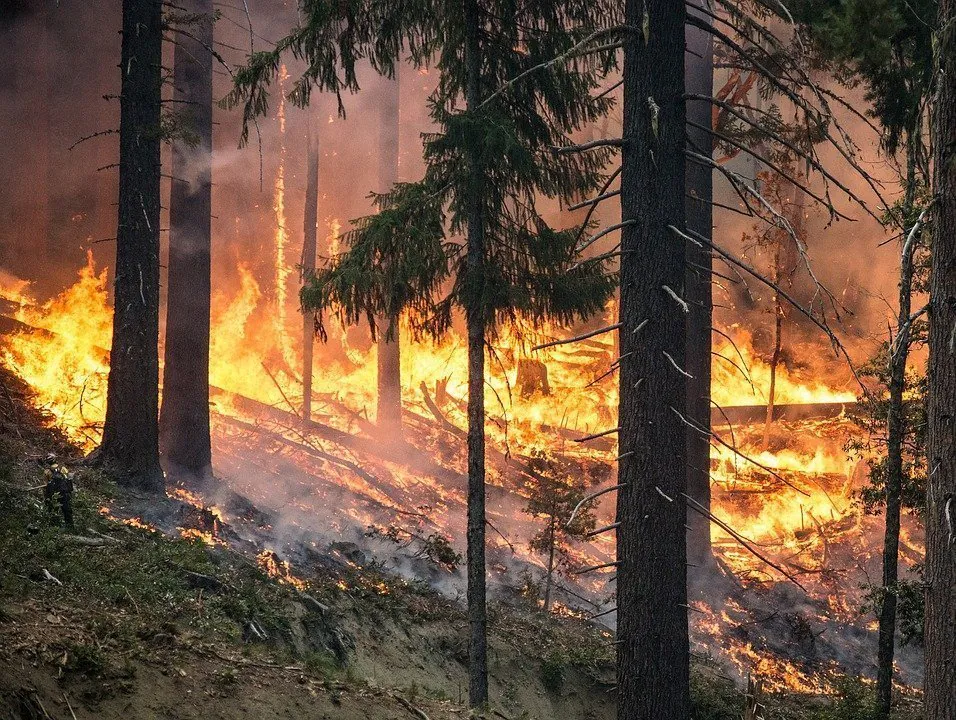Investments
AI Can Help Make Wildfires Quicker To Spot And Easier To Fight

In states like California, the wildfire season has become longer and more intense, driven largely by climate change. In response to the growing threat from wildfires, according to CNN, various startups have created AI tools intended to assist in the detection of wildfires.
It may seem obvious, but early detection is important for wildfires. The earlier the blaze is detected the faster it can be contained and the less damage it will do. Thankfully, the AI tools designed by companies like Descartes Labs, based in Sante Fe, seem to be more effective at detecting wildfires than either firefighters or civilians.
The Fire-detecting tool from Descartes Labs samples images from government weather satellites every two minutes, comparing the images for differences. If there is any difference in the thermal signals in a region, it could potentially indicate the presence of a wildfire.
Current methods of detecting wildfires rely primarily on spotting fire with either planes or lookout towers, but a system that makes use of AI and satellites can detect wildfires much quicker than these methods. The New Mexico State Forestry Bureaus has stated that the AI tool has definitely helped the state locate wildfires much more quickly than before. The tool also provides first responders with descriptions that can help narrow down where a fire is, which can be difficult when there is a lot of smoke or over a mountain range at night.
Descartes isn’t the only company to try and use AI to detect forest fires. Northrop Grumman recently started a contract with the state of Calfornia to design wildfire analysis tools, and the startup Technosylva has also invested in the creation of wildfire prediction methods.
It isn’t clear yet if the technologies designed by these companies may increase the risk of false alarms as a result of increased sensitivity to possible fires. However, what is clear is that the AI tools designed by Descartes can genuinely detect forest fires much earlier than even some of the best currently exiting fire detection methods. For example, Descartes states that their detection systems were able to alert the Los Angeles Times to the coordinates of the Kincade fire very shortly after the fire started. Descartes states that so far their quickest detection time is nine minutes after the ignition of the fire. As reported by CNN, Ernesto Alvarado, wildfire expert and researcher at the University of Washington, any system that is able to detect a fire in under 30 minutes after the ignition is pretty impressive.
Descartes is beginning to explore other methods of using AI and data to help detect and track fires. For instance, the company is in the process of designing digital elevation models that can describe steep slopes that could hinder firefighting efforts. Descartes is accomplishing this by using a variety of algorithms that each vote on the position of a fire on a map and come to a consensus.
While the tools developed by Descartes and others may prove effective at enabling the quicker detection of fires, getting fire response teams into position is a challenge all its own and unless this problem is solved, fire detection algorithms may not be as effective as theoretically possible. As an example, even after a potential fire is flagged by Descartes’ tools, the fire has to be forwarded on to the correct authorities, such as a field office that can verify the existence of the fire. After this, the notification must go out to fire departments in the area who must assess the best way to respond to the fire. These logistical challenges may impose limits on just how effective fire-detection systems can be, but even so, when it comes to detecting fires, earlier is always better.














